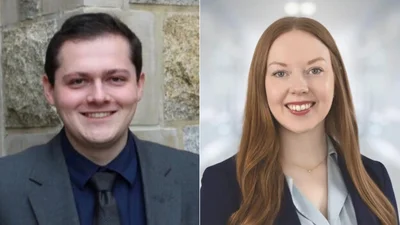Jesse M. Ehrenfeld, MD, MPH President | Official website
The American Medical Association (AMA) House of Delegates (HOD) has adopted a policy supporting the decriminalization of non-prescribed buprenorphine possession for personal use by individuals without access to a physician for opioid use disorder (OUD) treatment. A 2023 study found that buprenorphine treatment after a nonfatal opioid-involved overdose was associated with a 62% reduction in the risk of opioid-involved overdose death. Despite evidence supporting its effectiveness, access to buprenorphine remains limited due to stigma, regulatory and legal barriers, and health insurance issues.
“Opioid use disorder is a treatable medical disease and buprenorphine is proven to be an effective treatment,” said Bobby Mukkamala, M.D., AMA president-elect and chair of the AMA Substance Use and Pain Care Task Force. “Given the innumerable barriers to care for opioid use disorder, combined with the clear benefits of increasing access to buprenorphine, decriminalizing non-prescribed buprenorphine for personal use is necessary to prevent more overdoses and deaths.”
A new report from the AMA Board of Trustees indicates that school districts and universities nationwide are increasingly adopting measures to improve naloxone accessibility. The report underscores AMA policy encouraging states and communities to make overdose reversal medications available in educational settings.
CDC data show monthly overdose deaths among adolescents increased by 109 percent between 2019 and 2021, with 84 percent involving illicitly manufactured fentanyl. Two-thirds of these fatal overdoses had one or more potential bystanders present; however, naloxone was administered only 30 percent of the time.
“Schools are recognizing the value of having naloxone on hand. It is a needed layer of protection to keep young people safe and alive,” said Dr. Mukkamala. “AMA advocacy and model legislation have led approximately 30 states to authorize educational settings to administer naloxone. That’s great progress, but the remaining states need to get on board to save lives.”
The AMA continues advocating for widespread distribution and availability of naloxone while urging physicians to educate patients about it and prescribe it where appropriate.
To further promote naloxone usage, the AMA adopted new policies supporting its expanded availability by placing intranasal naloxone alongside automated external defibrillators (AEDs) in public locations.
“We know that naloxone is not only safe and effective in reversing opioid overdoses but easy for bystanders to use when an opioid overdose is suspected. By making naloxone more accessible, particularly where AEDs are located in public spaces, we can help prevent more opioid overdoses and save lives,” said Dr. Mukkamala.
In response to ongoing mental health crises and overdose epidemics, the HOD voted for policies strengthening AMA's commitment against insurers' non-compliance with the Mental Health Parity and Addiction Equity Act (MHPAEA). This includes continued advocacy for meaningful penalties against insurers failing parity laws compliance. A recent study found patients are nine times more likely than others seeking medical care outside their network when looking for behavioral health clinicians like psychiatrists or psychologists—highlighting affordability challenges in mental health care.
The AMA has long advocated holding insurers accountable under parity laws enforcement while urging federal regulators toward finalizing rules that would strengthen MHPAEA compliance.





